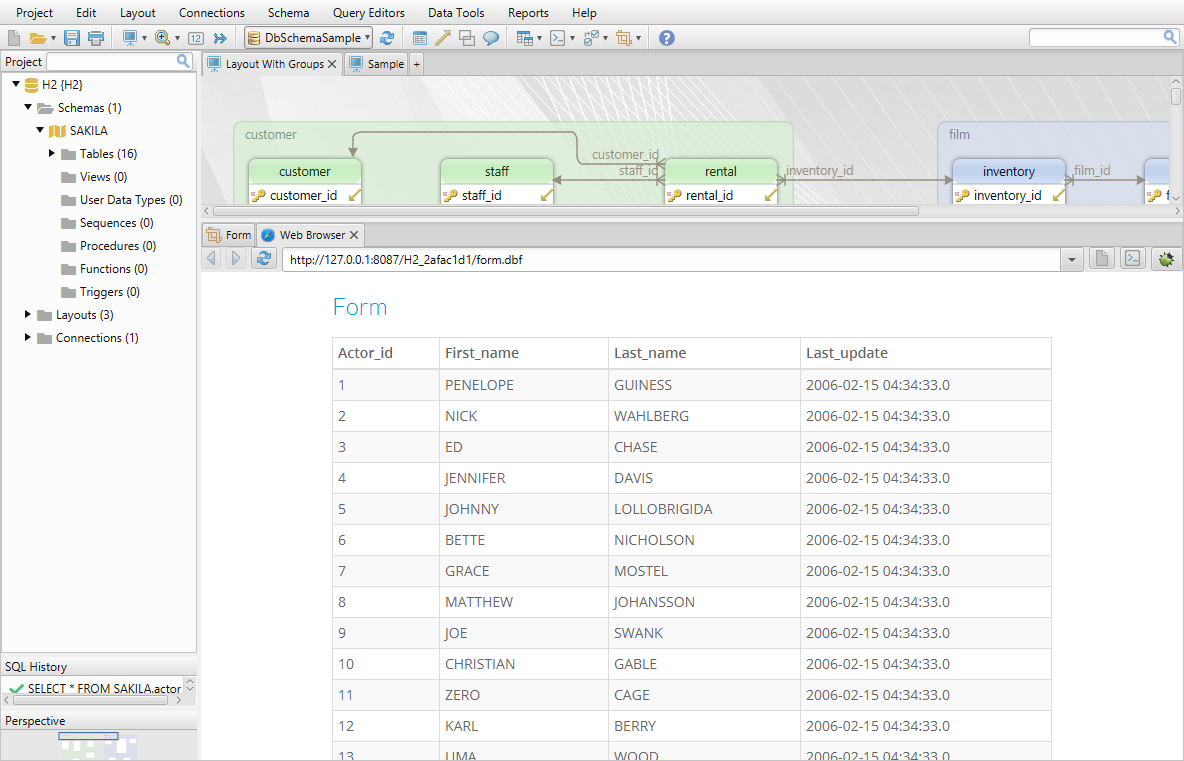

We can consider the conceptual stage as an initial model, without all the details required to create a database. We don’t usually include any details about each piece of information. Conceptual Data ModelĪ conceptual data model usually just includes the main concepts (entities) required to store information and the relationships that exist between these entities. a quick, high-level view of the business requirements) to logical (where the entities involved are expanded and include more detail) and finally the physical data model, which can be implemented with a specific database provider (like Oracle, SQL Server, or MySQL). Conceptual, Logical and Physical Data Models Explained and Comparedĭata models evolve from conceptual (i.e. In this article, we are going to review each one, understand their different features, and explain when to use them.
Data modeling using dbschema software#
The different model types (conceptual, logical, and physical) have different levels of detail and are used at different stages of the software development process. It requires a good understanding of the desired business outcome and is the foundation for creating a robust software solution. Find out the differences and use cases for each one.ĭata modeling implies identifying and defining entities and their relationships for a business solution. Relations cannot be modified, you need to delete and add a new relation if needed, know more.Depending on the purpose, we may need to create either a conceptual, logical, or physical data model. Foreign Key constraint can be modified from the respective Relation NOTE: Primary Key and Unique Kay constraints need to be modified at the Table level. You can review the type conversion from Java to SQL type from this document: Java Types vs SQL Data Types It is advisable to make changes to Java Types rather than SQL Types unless you want the changes to be reflected in the database, in which case you need to export the database. How the primary key columns gets its values - assigned - user entry or auto increment - for integer type, know moreĬolumns whose values need to be restricted as unique Table Modification upon selecting a tableĬolumn (columns in case of composite key) to be set as primary key

Data modeling using dbschema update#
Note to save it to the database use the Update DB option. Save database will save the changes to your workspace. This would bring in changes made to the database and will revert all changes done from the database designer. Re-import enables you to build the data model from the database again. Note this will not get any changes made to the database, use Re-Import for that. Revert DB designer to undo any changes made. Script tab will show the same changes in script format. A preview dialog will open which will list all the changes made to the DB. Update DB with the changes made from the DB Designer. If you want a different Java package name than the default name we generate, type it in here.ĭesign tab renders the database components – tables, columns, and relationships. WaveMaker generates Java classes for you when you import a database. Save Database will save the db in your app workspace, this is the draft copy of the database solely available to your app.ĭelete would delete the data model from the app.Īpart from the basic Database settings like host details, schema name etc., WaveMaker provides some advanced database configuration options. NOTE: You can only export to the same database system as the original import, you can change the database but not the database system. You can choose to export to the current database or to a different database. This would bring in changes made to the database and will revert all changes done by the database designer.Įxport will move the data model to the database of your choice.


 0 kommentar(er)
0 kommentar(er)
